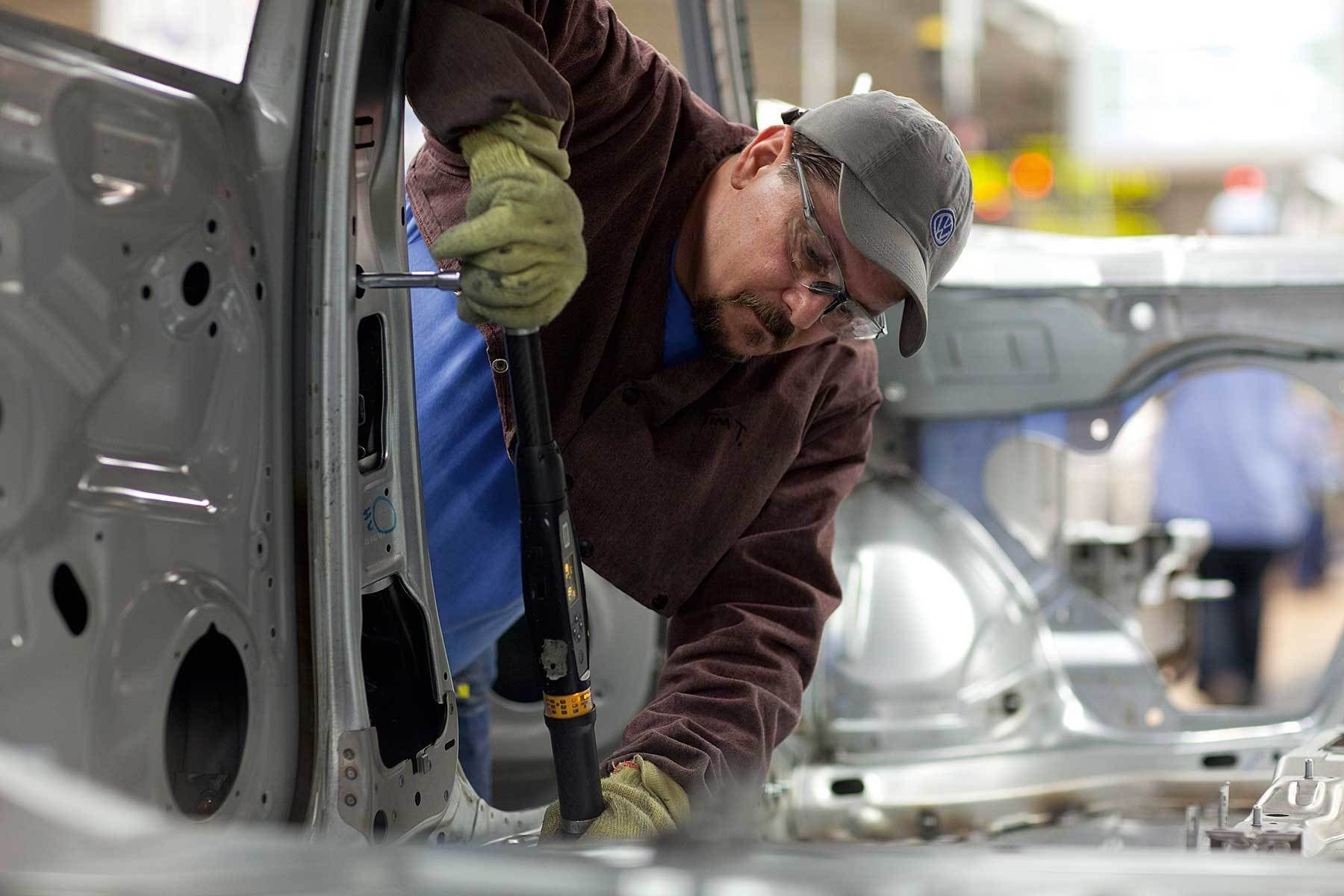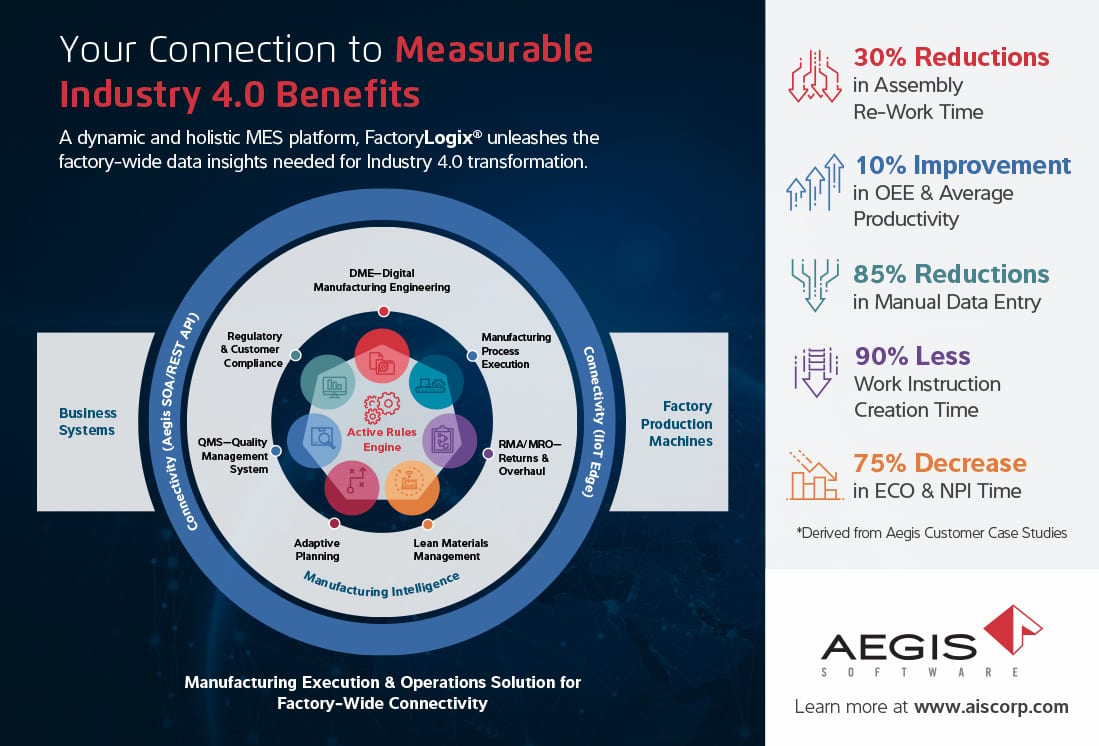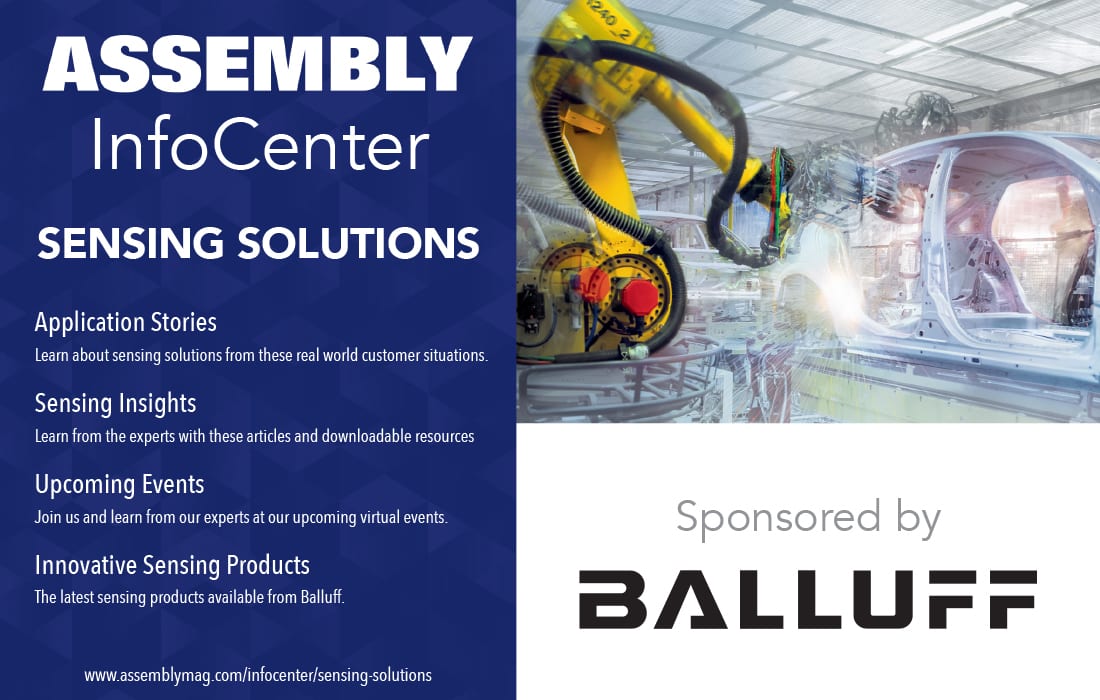Ergonomics
Brian Kramer // Manufacturing Industry Practice Lead
Amber Walton // Health Services Product Development
The Hartford Financial Services Group Inc. // Hartford, CT
Injury prevention services can help manufacturers hire and retain skilled workers.
Addressing the Labor Shortage Starts With Safety
Jay-Cee Sales stocks nearly 10 million pounds of fasteners at its Farmington, MI, facility, including standard small rivets from numerous vendors. Photo courtesy Jay-Cee Sales & Rivet Inc.
Creating a positive workplace culture that’s focused on safety and employee success is critical for attracting skilled workers.Photo courtesy Völker GmbH
The manufacturing industry faces a talent shortage, and it will take a multifaceted approach to address the issue. The industry was already struggling to find workers before the COVID-19 pandemic made it worse. As the marketplace adjusts, finding workers and retaining talent will come down to a series of factors, including job safety and a focus on employee health and wellness.
The pandemic caused workers to rethink their lifestyle, and many voluntarily left their jobs. At the same time, many manufacturers shut down during the height of the pandemic, causing millions of workers to lose their jobs. Today, as the pandemic evolves, manufacturers are working through backlogs or trying to meet and maintain elevated levels of demand for their products. This demand is putting pressure on an labor market that was already tight.
People are also re-evaluating their priorities in life, and some are leaving or retiring from the workforce. Other employees may be sitting on the sidelines, waiting for the right opportunity to re-enter the workforce. Another driving factor to the talent shortage is the availability of certain skills in the marketplace. Depending on the company, manufacturing jobs can require a higher level of skill that may not be readily available.
Certainly, automation can help alleviate the worker shortage. For example, collaborative robots are enabling manufacturers to automate mundane tasks, such as machine tending. That allows manufacturers to assign scarce human workers to tasks that they do best. Of course, more automation also creates a need for skilled workers who know how to program, calibrate and maintain the equipment.
See us at The Assembly Show, Booth 1323
Not Just Anyone
Manufacturers can use a physical demand analysis during the hiring process. Such testing gives potential employees an idea of the demands of the job, and it demonstrates their ability to perform the job safely Photo courtesy ZF Friedrichshafen AG
See us at The Assembly Show, Booth 700
Addressing the talent shortage in manufacturing is about more than just trying to fill open positions. If a manufacturer is unable to find workers who align with their needs, values and culture, it can impact productivity, safety and operational efficiencies.
It is not uncommon for people who are new to the industry to fill entry-level manufacturing jobs, but that inexperience greatly increases risk for injury. In fact, The Hartford’s workers’ compensation claims data for manufacturers indicates employees with less than one year of experience drive one-third of claim frequency. Even people who have manufacturing experience can be at an increased risk of injury if they have been out of work, are working on unfamiliar machinery, or are working longer hours. They may not be as conditioned to work as they were before the pandemic, which can lead to a higher risk of injuries in the workplace. Employers must recognize this situation and have a plan to reduce risk.
An effective and detailed training and onboarding process lays the foundation for high employee morale, safety and success. It is imperative that new employees learn how to properly perform their job duties. At the end of the day, we all want our employees to return home from work safely every day.
Assessments and Tools

Even experienced assemblers can be at an increased risk of injury if they have been out of work, are working on unfamiliar machinery, or are working longer hours. Photo courtesy Webasto SE
One way to ensure a prospective employee can perform a role is to conduct fit-for-duty testing. The Hartford’s onsite and virtual injury prevention services (IPS) provide proactive injury prevention methods, first-aid treatment and overall wellness support that can help employees stay healthy on the job. IPS can be customized to meet each employer’s unique needs by offering a variety of services. For example, a physical demands analysis (PDA) is a foundational tool that can help employers during the hiring process. IPS offers physical ability testing, individual ergonomic assessments and fit-for-duty sessions.
Considering manufacturers are hiring individuals that will likely need to be industrial athletes at work, performing in roles that are physically demanding all day, The Hartford helps mitigate risk for injuries by providing objective tools that can improve workplace safety. For example, employers can use a PDA when developing a safety program because it evaluates the physical requirements of a specific job. It measures the physical tolerance requirements to perform essential and marginal job tasks and maximum force requirements. It also provides information on positional tolerances along with machinery, tools and environmental factors surrounding a job function.
Manufacturers can also use a physical demand analysis during the hiring process. Post-offer and pre-hire testing gives potential employees an idea of the demands of the job, and it demonstrates their ability to perform the job safely. If potential employees are unable to perform a particular job, then the job is likely not right for them. The presence of a PDA provides the employer with a defensible and safe platform for new hire testing and can help identify return-to-work options if there is a workers’ compensation claim.
Creating a Culture to Attract Talent

Workers’ compensation claims data for manufacturers indicates that employees with less than one year of experience drive one-third of claim frequency. Photo courtesy Volkswagen
Creating a positive workplace culture that’s focused on safety and employee success is critical. Since the start of the pandemic, manufacturers have placed more of a focus on employee health and wellness.
It is also important to take a holistic approach and invest in employee mental health. The pandemic increased people’s feelings of anxiety and depression. In fact, most working Americans in The Hartford’s recent survey reported having at least a few symptoms of a mental health condition within the past two weeks. Offering programs like Injury Prevention Services demonstrates to employees that a manufacturer is serious about their workers’ overall health and wellness. When an employer can connect the dots that employee safety and well-being have a direct correlation to their mental health and overall morale, that’s when they’ll start attracting and retaining talent.
With IPS and other services, employers can send a message that they care about their employees and they’re trying to keep them happy and safe at work.
ASSEMBLY ONLINE
For more information on ergonomics, visit www.assemblymag.com to read these articles:




